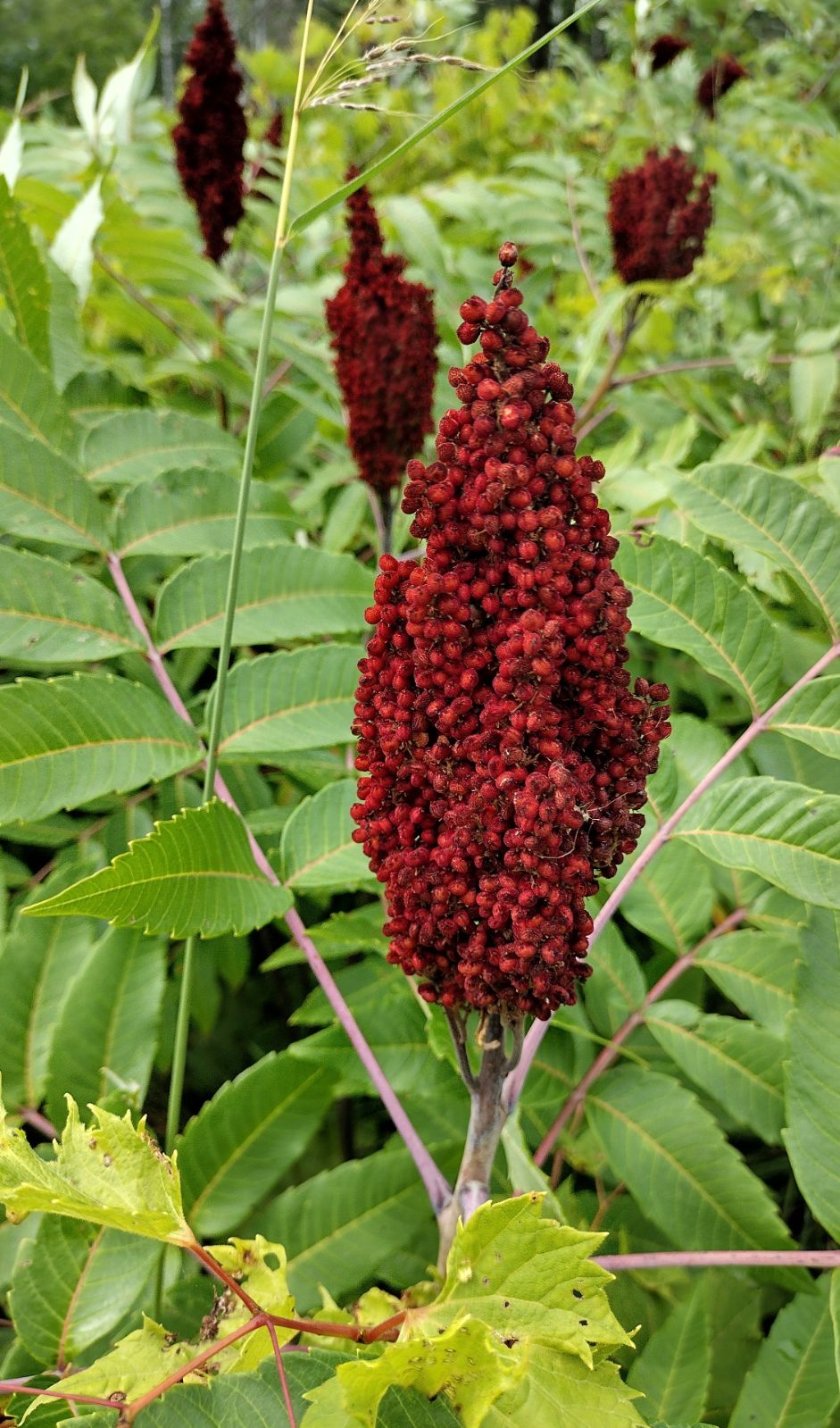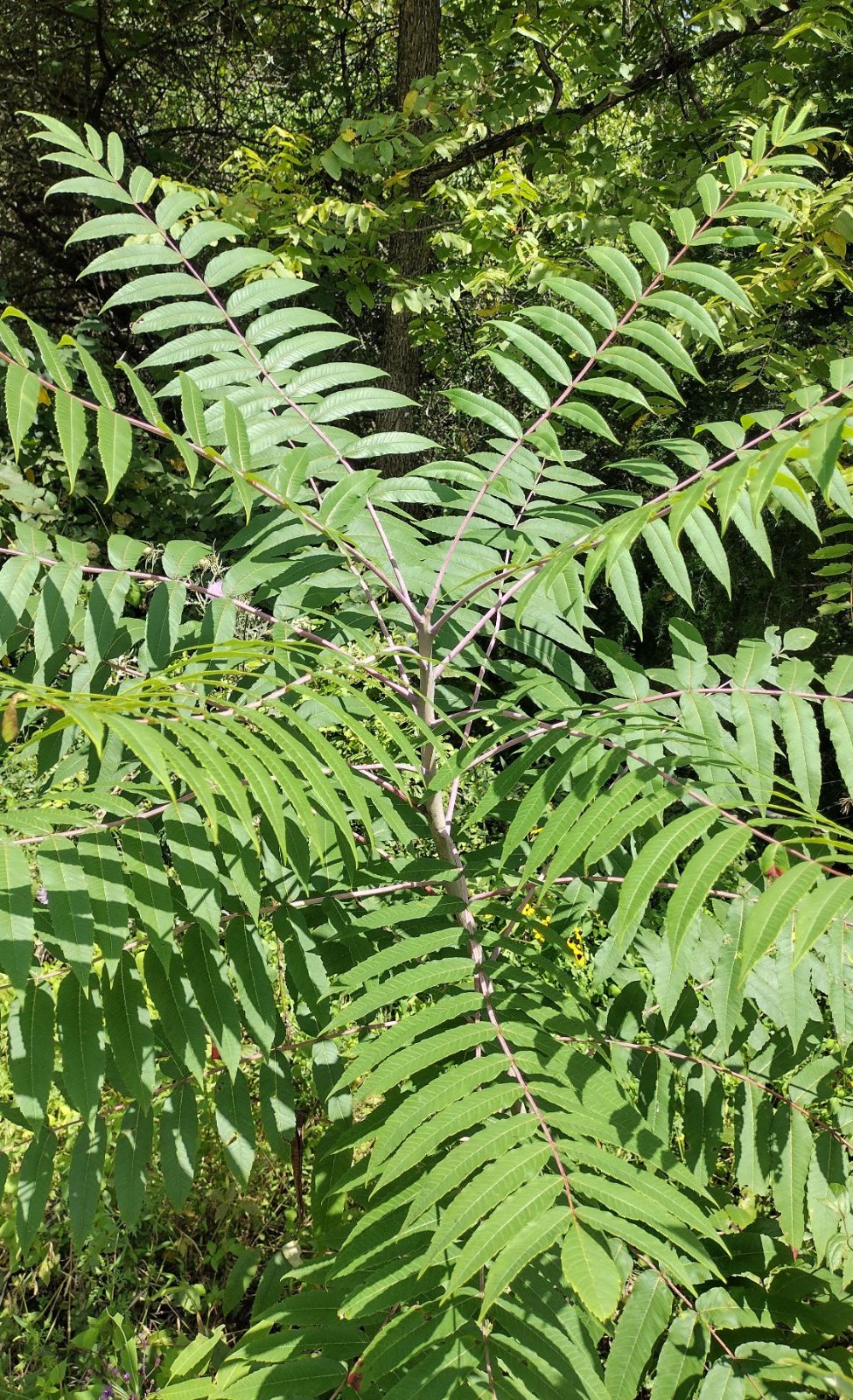Rhus glabra
Credits
Article from Bean's Trees and Shrubs Hardy in the British Isles
Recommended citation
'Rhus glabra' from the website Trees and Shrubs Online (treesandshrubsonline.
Genus
A deciduous, usually dioecious shrub, from 4 to 6 (rarely 10) ft high, with glabrous leaves and branches. Leaves pinnate, about 12 to 18 in. long, composed usually of from fifteen to twenty-nine leaflets, which are oblong-lanceolate, shallowly to rather deeply toothed, 2 to 41⁄2 in. long, 1⁄2 to 3⁄4 in. wide, glaucous beneath. Flowers mostly unisexual, closely packed in a dense pyramidal panicle 4 to 10 in. long, the stalks covered with red down. Fruits the size of large shot, packed like the flowers in a dense panicle, and covered with soft crimson hairs. They remain long on the plant after the leaves have fallen.
Native of N. America, where in some parts it is almost a weed; also of Mexico. It is nearly allied to R. typhina, and is very similar in its handsome fruit, but differs in the glabrous young wood and leaves, and its purely shrubby habit. The foliage turns a bright, rich red. Flowers in July and August.
'Laciniata'
One of the handsomest of hardy foliage plants, the leaflets being deeply cut so as to make the leaf almost or quite doubly pinnate. Its greatest beauty is obtained by cutting it hard back every spring, and thinning down the young shoots to one or two, thus obtaining broad feathery leaves 3 ft long, very striking in their autumn colour.’Laciniata’ is an older variety than its counterpart in R. typhina. It was discovered in the USA near Philadelphia by Elias Durand and was introduced to Britain from France in 1865.P × pulvinata Greene
Synonyms
P. × hybrida Rehd


